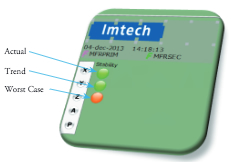Development of Fire Fighting & Damage Control automation that enables future crew reduction
DOI:
https://doi.org/10.25043/19098642.122Keywords:
Battle Damage Repair, Damage Surveillance & Control (DSAC), Fire Fighting & Damage Control (FFDC)Abstract
The Holland-class Patrol Vessels of the Royal Netherlands Navy has been designed to conduct world-wide operations with a low level of violence. Minimization of the exploitation costs has been translated in a frigate size vessel design to be manned by a crew of 50. In particular, the support of Battle Damage Repair required serious development as today’s solutions are based upon having a much larger crew. Adoption of modern fire-fighting techniques such as ship-wide deployment of automated water-mist systems and extensive use of center-fed hose reels appeared to be essential steps to cope with lower manning levels. However, that is not enough as there are other internal battle aspects that (today) require significant manpower such as information gathering to obtain the desired situational awareness of the current state of the damage, and complex engineering tasks to mitigate the damages and the management of the necessary resources. For this reason, this paper discusses the approach and development of four (4) platform management system Damage Surveillance and Control (DSAC) applications as an example how future internal battles can be supported to achieve a higher quality (less human errors) of battle damage control, by means of a better situational awareness and a significant reduction of the workload during Battle Damage Repair.
Downloads
References
E.J. MIDDELDORP, N.A. Badon Ghijben en R.D. Geertsma, ‘Advanced PMS functionality in the Royal Netherlands Navy: automation to support the internal battle’, proceedings INEC 2012.
S.C. HORENBERG and A.C.F. MELAET, ‘Uniting Weapon- and Marine knowledge –From goal to reality’, proceedings Engine As A Weapon 2013.
R.D. GEERTSMA, J.C. SCHREURS, D.J.M MEIJER and E.J. MIDDELDORP, ‘Integration of combat & platform management: developments in the Royal Netherlands Navy’, proceedings Engine As A Weapon 2013.
W. VAN DER ZWAN, ‘Task oriented design of Integrated Platform Management Systems’, 14th International Ship Control Systems Symposium (SCSS) in Ottawa, Canada, 2009
J. RASMUSSEN, ‘Information processing and human machine interaction: an approach to cognitive engineering’, 1986. ISBN 9780444009876.
NETHERLANDS’ MINISTRY OF DEFENCE, ‘Diagnostic Support Guideline for new ship programs’ directive, undisclosed.
DIN EN ISO 13407, ‘Human centred design processes for interactive systems’, 1999. Remark: superseded by ISO 9241-210.
K.S. VAN BODEGRAVEN, ‘Intelligent Control Systems for Navy Ships’, 2010.

Published
How to Cite
Issue
Section
License
The authors who publish in this Journal certify that:
- The work submitted for publication in The Ship Science and Technology journal, was written by the author, given that its content is the product of his/her direct intellectual contribution.
- All data and references to material already published are duly identified with their respective credits and are included in the bibliographic notes and quotations highlighted as such.
- All materials submitted for publication are completely free of copyrights; consequently, the author accepts responsibility for any lawsuit or claim related with Intellectual Property Rights thereof, Exonerating of responsibility to The Science and Technology for the Development of Naval, Maritime, and Riverine Industry Corporation, COTECMAR.
- In the event that the article is chosen for publication by The Ship Science and Technology journal, the author state that he/she totally transfers reproduction rights of such to The Science and Technology for the Development of Naval, Maritime, and Riverine Industry Corporation, COTECMAR.
- The authors retain the copyright and transfer to COTECMAR the right of publication and reproduction of the work which will be simultaneously subject to the Creative Commons Attribution License (CC -BY) , which allows the license to copy, distribute, display and represent the work and to make derivative works as long as it recognizes and cites the work in the manner specified by the author or licensor.
- For more information about the Creative Commons Attribution License (CC -BY) and his use and scope, please visit the following web page https://creativecommons.org/licenses/by-sa/4.0/legalcode








